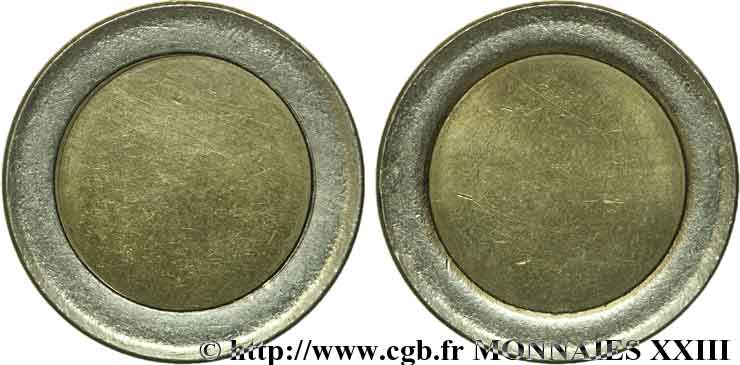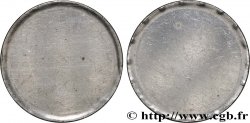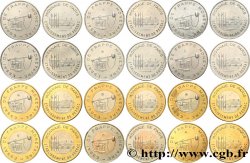v23_2112 - EUROPEAN CENTRAL BANK Flan vierge de 2 euro n.d.
MONNAIES 23 (2004)
Starting price : 200.00 €
Estimate : 500.00 €
unsold lot
Starting price : 200.00 €
Estimate : 500.00 €
unsold lot
Type : Flan vierge de 2 euro
Date: n.d.
Metal : copper nickel
Diameter : 25,75 mm
Orientation dies : 12 h.
Weight : 8,46 g.
Edge : **2 répété six fois insculpé à l’endroit puis à l’envers
Rarity : R2
Coments on the condition:
Exemplaire superbe même si on note de petites marques de frottement et de manipulation sur les champs
Catalogue references :
Obverse
Reverse
Commentary
Exemplaire illustré dans EURO 2 en page 89 avec le commentaire suivant : “D’origine belge, cette deux euro attend encore la frappe. Elle possède en revanche une tranche bien étoilée qui indique clairement sa nationalité et prouve, s’il en était besoin, que les tranches sont insculpées avant la frappe”. Nous notons tout de même que la tranche n’est pas striée et on y voit seulement les **2. Le flan ne peut par contre être que celui d’une pièce de deux euros. Selon certaines allégations, ces flans auraient une origine belge et auraient été “subtilisés” en cours de fabrication dans un atelier belge.
example illustrated in EURO 2 on page 89 with the following comment: “Of Belgian origin, this two euro is still awaiting minting. However, it has a well-starred edge which clearly indicates its nationality and proves, if proof were needed, that the edges are incised before minting.” We note, however, that the edge is not striated and only the **2 can be seen. The flan, however, can only be that of a two-euro coin. According to some allegations, these flans are of Belgian origin and were “stolen” during manufacture in a Belgian workshop.
example illustrated in EURO 2 on page 89 with the following comment: “Of Belgian origin, this two euro is still awaiting minting. However, it has a well-starred edge which clearly indicates its nationality and proves, if proof were needed, that the edges are incised before minting.” We note, however, that the edge is not striated and only the **2 can be seen. The flan, however, can only be that of a two-euro coin. According to some allegations, these flans are of Belgian origin and were “stolen” during manufacture in a Belgian workshop.








 Report a mistake
Report a mistake Print the page
Print the page Share my selection
Share my selection Ask a question
Ask a question Consign / sell
Consign / sell
 Full data
Full data














